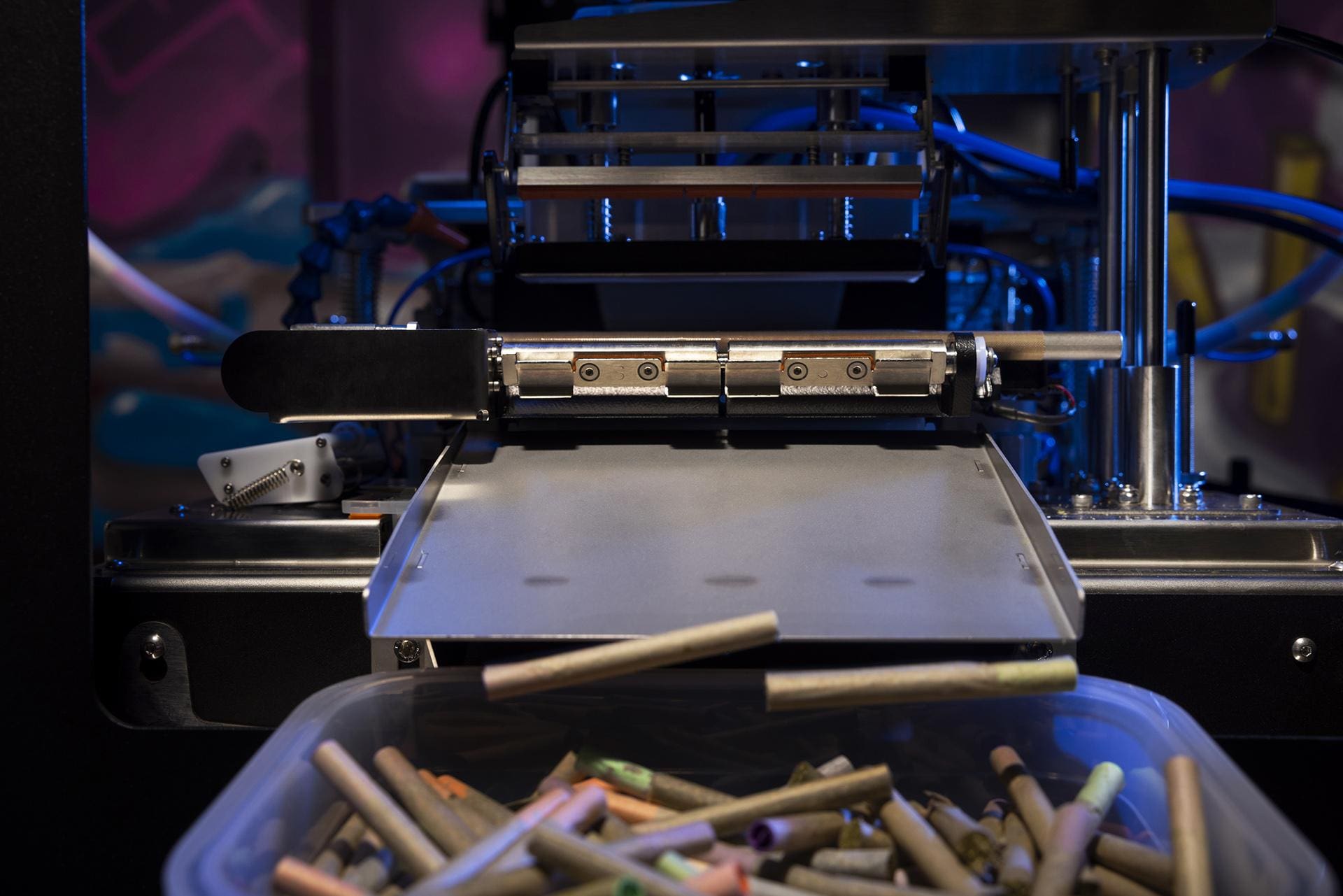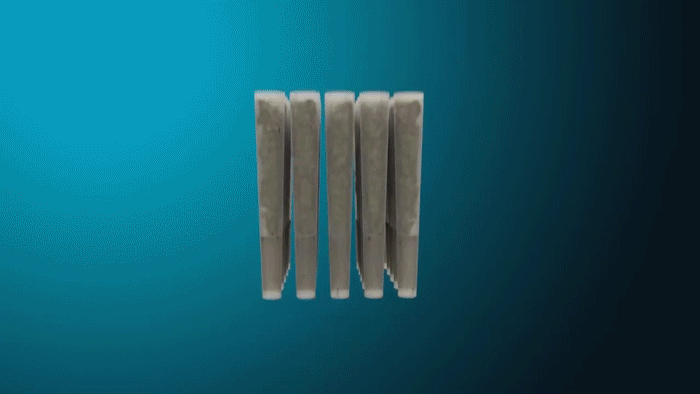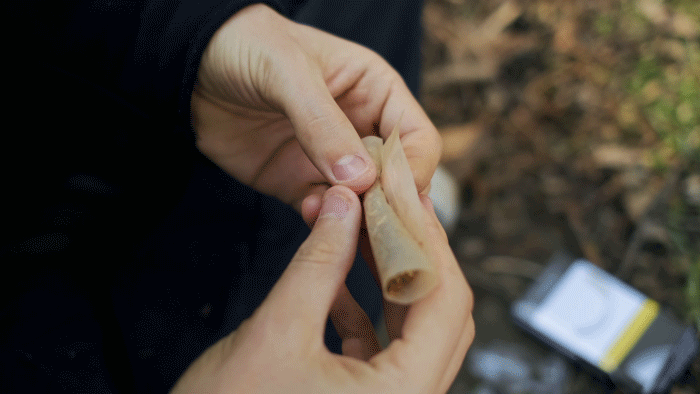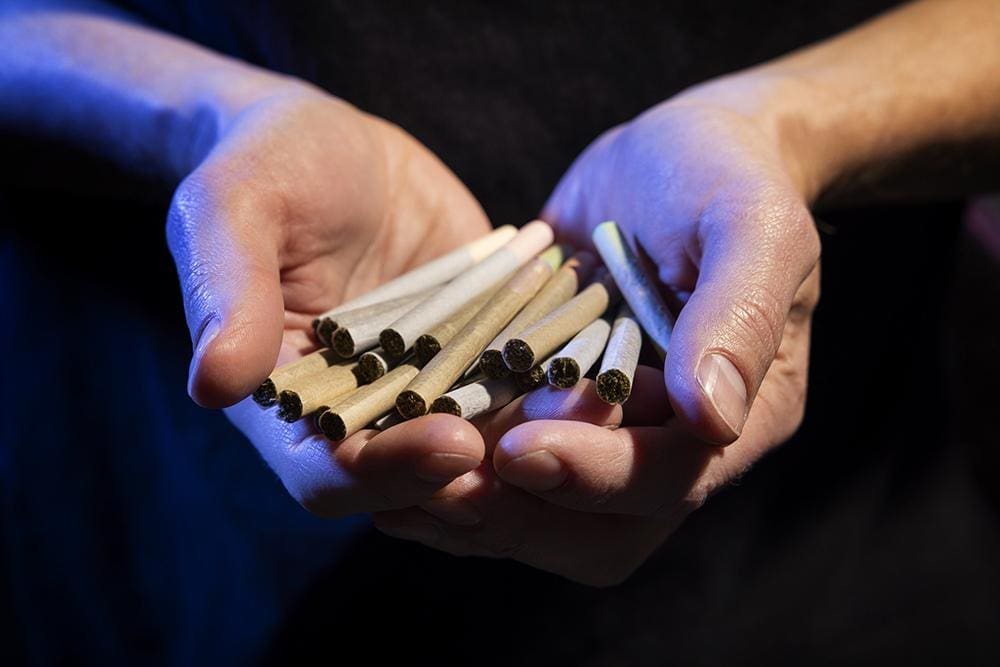NEED to know:
Exploring the Different Construction Methods
used by Automated Pre-Roll Machines
As the cannabis industry takes more and more steps into the realm of automation, fully automated pre-roll machines are becoming common at businesses both large and small.
Of course, not all automated pre-roll machines are created equal. Some are a better fit for smaller operations, while some make sense for only the largest brands and cultivators. Because this technology is so new, buyers and executives tend to focus on a limited set of KPIs and features to determine which machine will best help them achieve their goals.
But, to make an educated decision about what is the right fit for your needs, it’s important to understand the various types of automated pre-roll machines on the market.

Be wary of “capacity” or “throughput”
The first and most common question we get at RollPros: “how many joints can the Blackbird produce an hour?”
While this is essential information, it needs to be weighed amongst other important data points. After all, if a machine can split out 3000 pre-rolls an hour, but they are an inconsistent, low-quality product, the brand will face difficulty keeping customers and building loyalty.
If quality, consistency, and performance are important to your brand, there is another question that is equally as important:
What construction method is used to create pre-rolls on this machine?
There are currently 4 construction methods we see in the industry. Below, we’ll break down each one in as much detail as possible
Stuffed cone – compression and compaction.
Pre-made cones that are filled and compacted (or “stuffed”) from one end are the most common type of pre-roll on the market. This construction method is used by the vast majority of automated pre-roll machines. You’ve likely seen this in action at trade shows or in videos: flower drops into one end of a pre-made cone. Then, a piston drops into the end of the cone and tamps the plant material down, compressing and compacting it into the cone. A secondary component of the machine then twists the top of the pre-roll, which completes the process.
There are variations of this method that use vibration to compact the plant material, as well as some that fill the cone halfway, tamp down the material, fill it the rest of the way, and tamp it down again.

Because this is currently the most common pre-roll construction method (by far), we blame it for the pre-roll category’s reputation for low quality products. The density of the plant material is often inconsistent throughout the joint (tamping creates a denser pack near the crutch and a lighter pack near the tip), so pre-rolls made this way tend to draw unevenly. The consumer may need to draw with more force at the top of the joint and less at the bottom.

Uneven burning is also a very common problem. So common, in fact, that it has its own word in the cannabis lexicon: canoeing.
With a sealed end, many manufacturers employing this construction method use their pre-rolls as a way to squeeze a bit more profit out of their harvest. There’s nothing wrong with that, in theory! Except that common practice is to take low-grade flower, trim, and shake, then use good branding and potentially even dry-infusion to make it look more appealing and provide more punch. If you’ve heard people call pre-rolls the “hot dogs of the cannabis industry”, this is why.
Knockbox style – Not-so-good vibrations
In the early days of the legalized cannabis industry, the knock box-style units were as automated as you could get. The idea is simple. A box-shaped unit holds between 20 and 200 cones, with the open end of the cone level with the upper surface of the box. The plant material is spread across the upper surface of the box, and then the box uses vibration and gravity to move the material into the cones. They then are then manually tamped down from the top, and the ends are twisted to seal the plant material into the cones.

Early versions of this concept were essentially just a jig that held the cones in place, while more recent versions automate the vibration, tamping, and even twisting. Because even the newest units using this pre-roll construction method are at best partially automated, it is not an option for anyone but the smallest cultivators and brands. And, while it is the lowest-cost step into pre-roll automation, knock box style units come with many of the issues that have plagued pre-roll production from the beginning: uneven burning, inconsistent material and draw, and very limited customization options.
Wrapped cylinder – Hey, it worked for cigarettes, right?
Automation in cigarette manufacturing has been advancing for several hundred years. Recently, several large-scale cigarette manufacturing equipment companies have tried to cash in on the green rush, and developed re-purposed versions of their machines to be used in the cannabis industry.
This category of machines use the wrapped cylinder construction method. It is exactly as it sounds – a piece of paper is wrapped around a cylinder of plant material and sealed. Although the end product may look similar to one made with the compression-rolled cylinder method, (discussed below), what is under the hood is very different.
Wrapped cylinder joints burn more evenly than stuffed cones, will be more consistent from batch to batch, and offer more branding opportunities.


Because these machines were not developed specifically for the cannabis industry, they require the plant material to be similar to that in cigarettes – very dry and finely shredded. (Cannabis can be very sticky, tobacco is not, among many other differences). But as pre-roll experts, we know that moisture content is critical to a great joint, (specifically, in the range of 8-12% moisture is best.) Consumers smoking a joint made using the wrapped cylinder method will have less flavor, less aroma, and less efficacy compared to those made using other methods.
One important note on machines that use the wrapped cylinder method: while they offer higher capacity than anything else in the industry, they also come with the largest price tag. These type of machines typically start at $1.9 million and go up from there.
Compression-rolled cylinder – The Rolls Royce of pre-rolls
While you may not know it, a compression-rolled cylinder is the type of joint that cannabis aficionados have been rolling with their hands since the very first union of cannabis and paper. (And, since you’re reading this article on the RollPros website, you can imagine where this is going.)
There is only one machine on the market that constructs joints using this method: our very own Blackbird Rolling System. When you roll the joint back and forth across your fingers while simultaneously applying pressure to the outside of the paper, you are using radial compression. A compression-rolled cylinder is manufactured using radial compression, meaning that the pressure on the outside of the cylinder comes from all directions, not just a single pressure point.

This is the technique behind RollPros patented TruRoll technology, and a big part of why the Blackbird is designed specifically to create premium products.

The result is pre-rolls from a Blackbird burn more evenly, draw consistently, smell better, taste better, and aren’t dried to a crisp compared to other types of pre-rolls currently on the market today. And, while automation that mimics this traditional technique is only a couple years old, to date more than 15 million joints have been rolled by a RollPros Blackbird.
Brands that have reacted to the consumer demand for convenience AND high-quality have adopted the Blackbird into their operations and seen exceptional success. (See Rebel Spirit, PharmaCann, Raw Gardens, and many others.) It just makes sense, considering 4/5 joint smokers prefer a joint from a RollPros Blackbird to a stuffed cone made on a competitor’s machine.
Now you know.
Nobody knows your business better than you. But, now that you understand the construction methods used by the automated pre-roll machines currently available, you can make a more informed purchasing decision. Is the Blackbird the right fit? (Possibly not, but probably!) Set up a virtual demo with one of our straight-rolled joint experts to see it in action.





